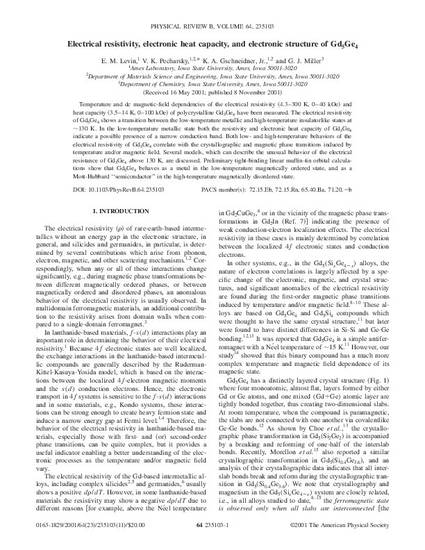
Temperature and dc magnetic-field dependencies of the electrical resistivity (4.3–300 K, 0–40 kOe) and heat capacity (3.5–14 K, 0–100 kOe) of polycrystalline Gd5Ge4 have been measured. The electrical resistivity of Gd5Ge4 shows a transition between the low-temperature metallic and high-temperature insulatorlike states at ∼130 K. In the low-temperature metallic state both the resistivity and electronic heat capacity of Gd5Ge4 indicate a possible presence of a narrow conduction band. Both low- and high-temperature behaviors of the electrical resistivity of Gd5Ge4 correlate with the crystallographic and magnetic phase transitions induced by temperature and/or magnetic field. Several models, which can describe the unusual behavior of the electrical resistance of Gd5Ge4 above 130 K, are discussed. Preliminary tight-binding linear muffin-tin orbital calculations show that Gd5Ge4 behaves as a metal in the low-temperature magnetically ordered state, and as a Mott-Hubbard “semiconductor” in the high-temperature magnetically disordered state.
Available at: http://works.bepress.com/gordon-miller/34/

This article is from Physical Review B 64 (2001): 1, doi:10.1103/PhysRevB.64.235103. Posted with permission.